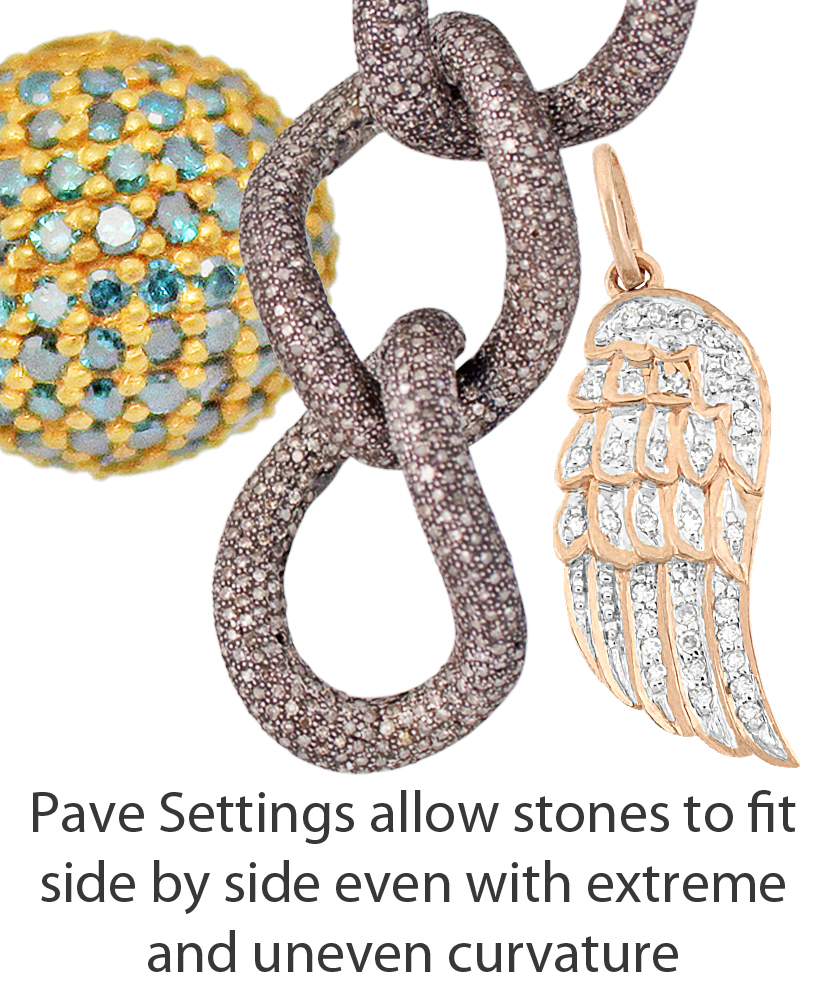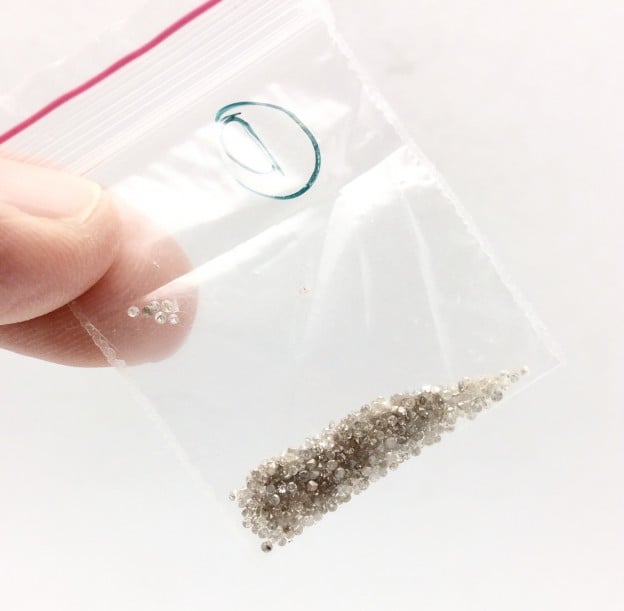Pave Setting is a perfect example of how little stones can make a big impact on your jewelry designs. While everyone loves to admire beautiful gemstone specimens, the design process that allows these beauties the chance to shine to their potential is often an afterthought. It is a shame that people tend to fixate on the size and quality of stones when it comes to finished jewelry with precious stones because such a narrow focus only tells part of the whole story. In this article, we will introduce the common uses of pave settings in jewelry and how you can use these components to get all the sparkle for a fraction of the cost.
What is a Pave Setting?
Pave Settings give the appearance of a continuous surface of gemstones by placing many tiny stones side by side with as little metal separating the stones as possible. Pave settings are generally the preferred choice for tiny stones because it combines their reflective properties in a way that would not be possible on their own. This type of setting is most popular for stones under 2mm, which allows great freedom for incorporation into complex pieces with custom shapes and curvatures where larger stones would not fit. Though very labor intensive, the resulting piece combines separate bits and pieces into something truly special.

What metals are used in Pave Setting?
While pave settings can be made from any metal, designer jewelry normally features stones that are set into precious metals like 14K or 18K Gold, Platinum and Sterling Silver. Platinum is generally used with high quality white diamonds for custom pieces and wedding bands because of its white color and high material cost. Karat gold and Sterling Silver are arguably better suited for pave jewelry because they can be used in most of the same designs as .950 Platinum but are available in multiple colors and at cost much less.

Oxidized Silver Pave Diamond Jewelry
The explosion of jewelry featuring diamonds set in oxidized silver over the past few years is a great example of how versatile the pave setting can be. Oxidized Sterling Silver jewelry with diamonds usually does not use clear white diamonds common in traditional fine jewelry—they use brownish champagne color diamonds which contrast beautifully with the dark metal finish but would not work well in white or yellow metals. These champagne diamonds cost significantly less per carat than their clear white counterparts and it would not make sense to set these diamonds in materials like Platinum which can be well over 50 times the cost of Sterling Silver. The end result is that the designer does not need to break the bank to use real diamonds in their jewelry.

To sum things up…
Pave settings are a shining example of how settings have many purposes aside from just holding the gemstones in place. They display the maximum brilliance within a jewelry design by capturing and combining reflections from each stone. Pave setting allows for great versatility in designer jewelry, both with the styles they conform to and with budgeting the final piece. Whether you are adding small accents to a piece, or want to go all out with huge diamond bling, there will always be room to fit in a little bit more sparkle.
–Cyrus Nemani, Gempacked
Find tons of different styles of Pave Diamond Silver Beads, Lobster Clasps with Diamonds, 14K Gold Diamond Balls, and other Diamond Findings at Gempacked.com

